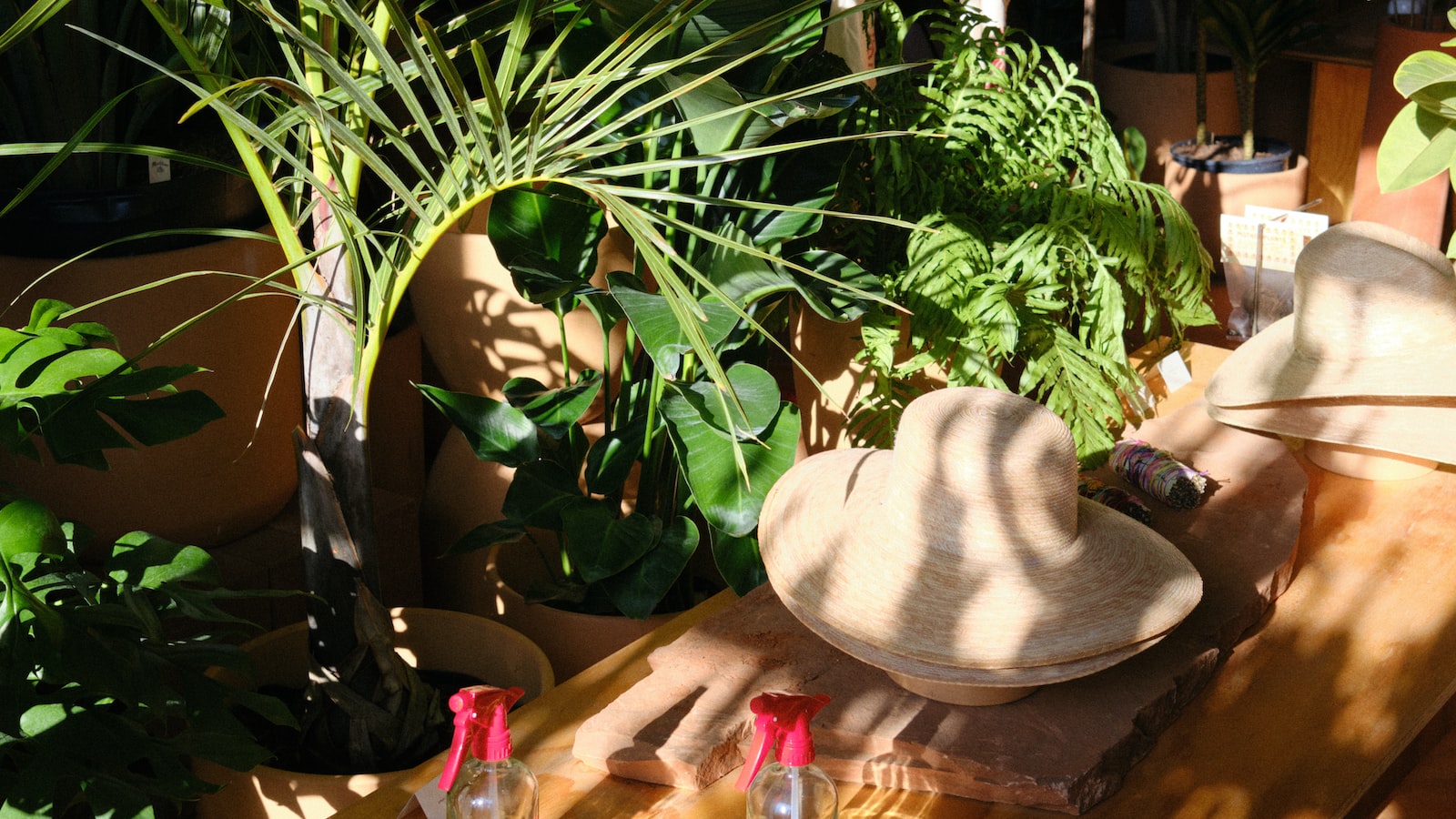Gossamer rays of sunlight dance playfully on the verdant tapestry of an enchanting vegetable garden. Amidst this symphony of colors and fragrances, the spirited pepper plants stand tall, their vibrant green leaves reaching towards the heavens. Ah, but behold! A troupe of well-intentioned gardeners approaches, bearing watering cans brimming with liquid promises of hydration. Alas, it seems that these dedicated green thumbs have overindulged their beloved peppers, causing an unfortunate drenching catastrophe. Fear not, dear horticulturists, for in this article, we shall uncover the secrets hidden within the garden’s therapeutic embrace on how to revive and nourish those overwatered pepper plants. Prepare your pruning shears, bring forth your patience, for the resuscitation of your pepper plants is nigh!
Reviving Overwatered Pepper Plants: A Comprehensive Guide to Save Your Crops
Sometimes, despite our best intentions, we can end up overwatering our beloved pepper plants. But fear not, for there are steps you can take to revive them and save your precious crops! In this comprehensive guide, we will explore the various techniques and strategies to fix overwatered pepper plants and ensure their healthy growth.
- Assess the Damage: The first step is to carefully observe your pepper plants. Look for signs of overwatering such as yellowing leaves, wilting, or droopy stems. This will help you determine the extent of the damage and guide your next steps.
- Adjust your Watering Schedule: One of the most important aspects of saving overwatered pepper plants is to correct your watering habits. Scale back on the frequency and volume of water to allow the roots to recover. Give them time to dry out between waterings, allowing the soil to become slightly dry before watering again.
Furthermore, here are some additional features and tips to consider:
| Feature | Description |
| Proper Drainage | Ensure your pepper plants are in well-draining soil or pots to prevent waterlogged roots. |
| Prune Damaged Leaves | Remove any yellow or brown leaves to encourage new growth and redirect the plant’s energy. |
| Use Fertilizer Sparingly | Avoid overfeeding your plants with fertilizers as it can add unnecessary stress to their already weakened state. |
By following these methods and tips, you can successfully revive your overwatered pepper plants and set them on a path to recovery. Remember to remain patient and attentive to your plants’ needs, always striving for a balanced watering schedule to ensure their long-term health and productivity.

Analyzing the Symptoms: Understanding the Signs of Overwatering in Pepper Plants
Pepper plants are a favorite among gardeners, thanks to their vibrant colors and fiery flavor. However, like any other plant, they can suffer from the effects of overwatering. It’s important to understand the signs and symptoms of overwatering in order to address the issue and bring your pepper plants back to their optimal health.
One of the most common signs of overwatering is wilting leaves. If you notice that your pepper plant’s leaves appear droopy and limp, it could be a clear indication of too much water. Another tell-tale sign is yellowing of the leaves, especially if the yellowing starts from the bottom and gradually spreads upwards. Overwatering can also lead to the development of root rot, which is characterized by foul-smelling, mushy roots.
To fix overwatered pepper plants, there are several features and tips to consider. Firstly, ensure that you have a well-draining soil mix that allows excess water to freely drain away from the roots. Additionally, adjust your watering routine by allowing the top inch of soil to dry out before watering again. This will prevent waterlogged conditions and promote healthy root growth. It’s also helpful to provide proper air circulation around the plants by spacing them adequately apart. Lastly, consider using mulch to help retain soil moisture and prevent excessive evaporation. By following these tips, your pepper plants will be on their way to thriving once more.
| Tips | |
|---|---|
| Well-draining soil mix | Allow top inch of soil to dry out before watering again |
| Adequate spacing for air circulation | Consider using mulch to retain soil moisture |

Emergency Treatment: Steps to Immediately Rectify Overwatered Pepper Plants
<br>
<p>So you've accidentally overwatered your beloved pepper plants, but don't fret! We've got you covered with some simple and effective steps to bring them back to their flourishing selves. Overwatering can cause root rot and other issues, but with quick action and a little care, your peppers will be on their way to recovery in no time.</p>
<br>
<p><strong>Step 1: Assess the Damage</strong></p>
<ul>
<li>Check if the soil feels continuously saturated.</li>
<li>Look for signs of yellowing or wilting leaves.</li>
<li>Inspect the roots for any mushy or discolored areas.</li>
</ul>
<p><strong>Step 2: Adjust Watering Frequency and Drainage</strong></p>
<ul>
<li>Reduce watering frequency to allow the soil to dry out slightly between waterings.</li>
<li>Ensure proper drainage by using pots with drainage holes and adding a layer of gravel at the bottom.</li>
<li>Consider repotting your peppers in well-draining soil to prevent future overwatering issues.</li>
</ul>
<table>
<tr>
<th>Features</th>
<th>Tips</th>
</tr>
<tr>
<td>Root health inspection</td>
<td>Regularly check the roots for any signs of rot or damage.</td>
</tr>
<tr>
<td>Watering frequency</td>
<td>Water only when the soil feels dry to the touch.</td>
</tr>
<tr>
<td>Well-draining soil</td>
<td>Use a <a href="https://up-gardening.com/how-much-potting-soil-for-5-gallon-bucket/" title="How Much Potting Soil for 5 Gallon Bucket">high-quality potting mix</a> that allows excess water to flow through.</td>
</tr>
</table>
<p>Following these steps and incorporating the provided features and tips will help you revive your overwatered pepper plants and ensure their continued growth. Remember, a little adjustment and attention go a long way in maintaining healthy and thriving plants!</p>
Long-term Solutions: Preventing Overwatering and Maintaining Optimum Pepper Plant Health
When it comes to fixing overwatered pepper plants, it’s crucial to not only address the immediate symptoms, but also to implement long-term solutions that prevent future overwatering and maintain the overall health of your plants. Overwatering can lead to root rot, nutrient deficiencies, and stunted growth. To avoid these issues, here are some key features and tips to consider:
| Tips | |
|---|---|
| Appropriate Watering Technique |
|
| Monitoring Soil Moisture |
|
| Proper Drainage |
|
By incorporating these features and tips into your gardening routine, you can make a significant difference in preventing overwatering and promoting the long-term health of your precious pepper plants. Remember, maintaining the right balance of moisture is crucial for their well-being. With a little knowledge and care, you’ll soon enjoy bountiful harvests of flavorful peppers that thrive in their optimal growing conditions.
Frequently Asked Questions
Q: What turns pepper plants into water-loving divas? A: Overwatering is the main culprit behind the melodrama of overwatered pepper plants. These sensitive beauties need a delicate balance of hydration, just enough to quench their thirst but not drown them in puddles of woe.
Q: How can I mend the broken hearts of my overwatered pepper plants? A: Just like any broken heart, healing takes time and patience. The first step is to examine the roots by gently removing the plant from its damp soil. Trim any damaged and mushy roots with a caring touch. Then, transfer your plant to fresh, well-draining soil to reintroduce it to the joys of aeration. Remember, a fresh start can often mend even the most broken of hearts.
Q: WhatR
17;s the golden rule to avoid turning my pepper plants into waterlogged drama queens? A: The key to maintaining a harmonious relationship with your pepper plants is to follow the golden rule of watering – moderation is key! Ensure that the top inch of soil is dry before watering again, and always give your peppers a chance to whisper for a drink before indulging their every water-soaked desire. Remember, a little tough love will go a long way! As we bid adieu to our tender pepper plants, we embark on a journey that promises renewal and resilience. The tale of our overwatered peppers serves as a reminder of the delicate balance between nurture and restraint. With a touch of patience and a dash of wisdom, our green comrades will rise from the depths of their soggy predicament, standing tall and proud once more.While the journey may have called upon us to correct the errors of our watering ways, it has also demanded that we delve deeper into the intricate dance between the elements that bind our botanical world. Through gentle mastery, we have uncovered the secrets to reviving our precious pepper plants, nourishing them back to health with just the right touch.
But the lessons gleaned from this soggy ordeal extend far beyond the realm of gardening. They reveal to us the importance of listening to the needs of each entity, understanding the nuances that define their existence. Through our errors, we have learned that sometimes it is in withholding guidance that we empower our pepper plants to find their own strength, their truest natural essence.
So, dear ga
rdeners and cultivators of green life, let us embrace this knowledge as we part ways with our overwatered heroes. May their journey towards recovery serve as a reminder that even in the midst of despair, there lies an untapped potential waiting to emerge. For just as our overwatered peppers have found their path to rejuvenation, so too can we find our own as we tend to the ever-changing landscapes of life.As we step forward, armed with newfound wisdom and a touch of humility, let us grow alongside our plants, their survival mirroring our own aspirations. Together, we shall embark on a future where watered roots run deep and harmony between caretaker and cared-for is the foundation of our shared growth.
Farewell, cherished overwatered peppers, may your journey to recovery inspire us all to embrace the delicate balance of nature with every seed we sow and every garden we tend. We bid you adieu with gratitude, for in your resiliency, you have taught us a lesson that extends far beyond the realms of horticulture.
- When to Put Weed and Feed on Lawn in Michigan - October 16, 2023
- When to Fertilize Potatoes Plants - October 16, 2023
- Can You Plant Clover in the Spring - October 16, 2023
Contents
- 1 Reviving Overwatered Pepper Plants: A Comprehensive Guide to Save Your Crops
- 2 Analyzing the Symptoms: Understanding the Signs of Overwatering in Pepper Plants
- 3 Emergency Treatment: Steps to Immediately Rectify Overwatered Pepper Plants
- 4 Long-term Solutions: Preventing Overwatering and Maintaining Optimum Pepper Plant Health
- 5 Frequently Asked Questions

